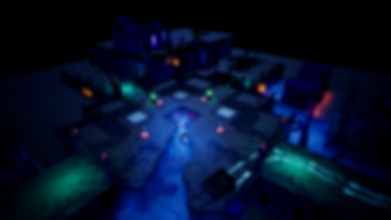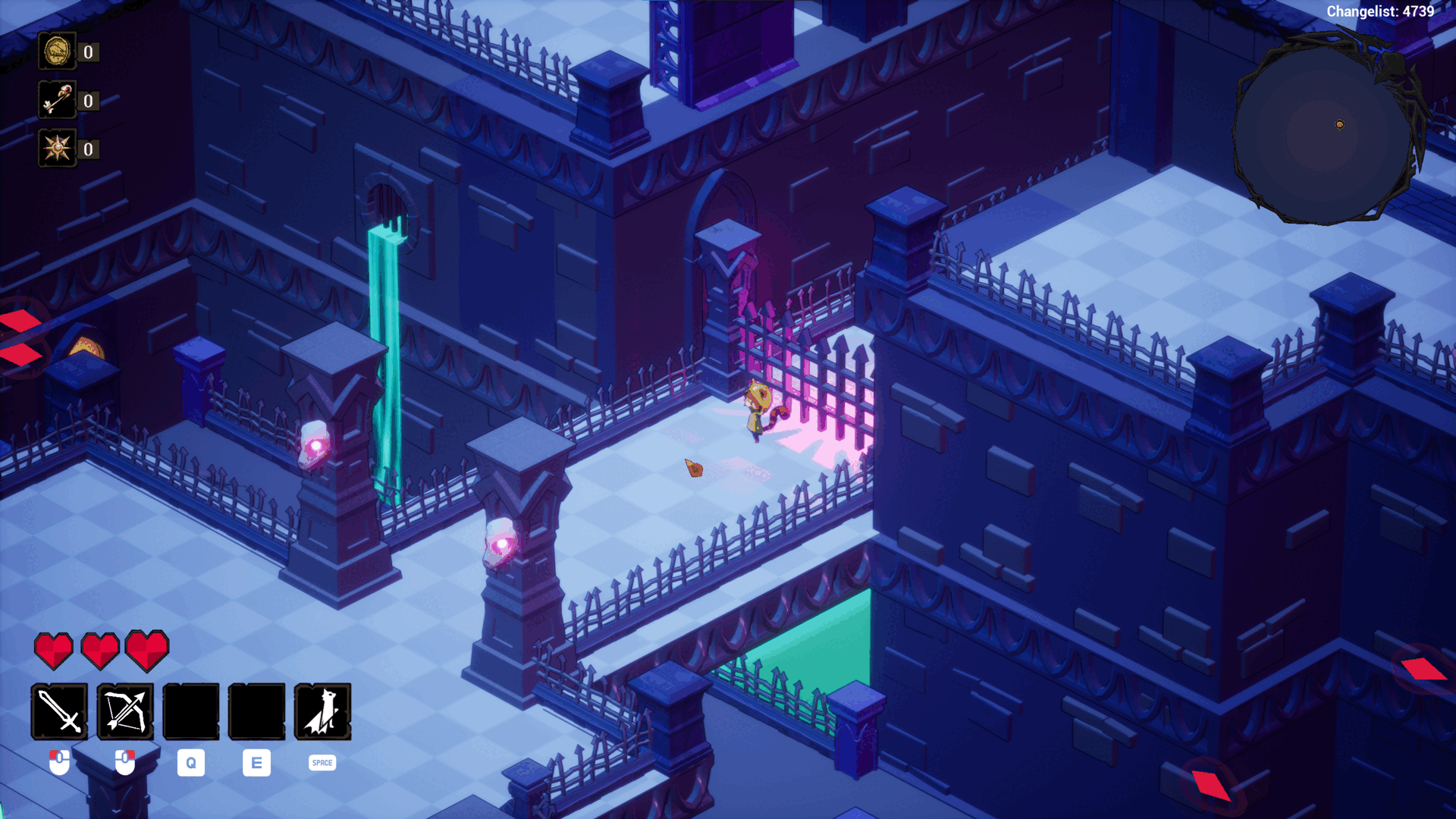Rik Boerma - Level / Game Designer
LOST IN LIMBO
ROLE
Level Designer
GENRE
Action Roguelite
MADE WITH
Unreal Engine 5
Lost in Limbo is an action roguelite adventure game currently in development at Verdant Games with a focus on fast-paced combat and exploration. I worked on this title as a level design intern for 10 months.
During this time, my main responsibility was to design and polish levels, going through all stages of the level design process, from blockout to iteration to setdressing. In addition, I concepted and protoyped different game mechanics, such as level ingredients and economy features.

LEVEL DESIGN FEATURES
Compact Combat Loop Design
-
Compact levels suit the game's fast-paced hack & slash combat
-
Loops built into the level structure create a natural flow around the level.
-
Level ingredients and blocking spaces are carefully placed to avoid excessive empty space, keep combat tight and force the player to consider their surroundings.
-
Verticality creates both risks and opportunities for the player.
Exploration
-
Secrets around the levels encourage exploration.
-
Keeps levels interesting on subsequent playthroughs.
-
Helps to make a procedurally generated world feel more real and adventurous.


LEVEL DESIGN PROCESS
Conditions of Satisfaction & Phases
-
The level design pipeline was broken up into several phases.
-
Together with the other level designers, I helped to establish conditions of satisfaction (CoS) for each phase.
-
I kept track of the progress on each level I worked on by updating the CoS document.
-
Once a level had all of its CoS for the current stage met and was approved by the level design lead, I would move on to the next stage.

Draft Stage
-
The very first stage that only includes blockout elements and level ingredients.
- Built quickly to establish the space and core gameplay of the level and allow for rapid iteration.
Alpha Stage
-
First rough setdress elements to establish a direction for the level's theme without hindering gameplay.
rBeta Stage
-
Initial setdress worked out more and polished.
-
First lighting pass.
-
A first presentable version of the level.
-
This example is blurred because of confidentiality reasons.



EXPLORATION LEVELS
Large, Exploration-focused Levels
-
Early level experiments included larger levels with a stronger focus on exploration and puzzle solving.
-
These were scrapped due to scope and not fitting well with the roguelite genre but still taught me a lot about dungeon design in an isometric action adventure game.
-
In one of these levels I worked on, I pushed the sewer theming of the level and made heavy use of moving platforms to give the level its own distinct visual and gameplay themes.

Level Planning
As we wanted to keep exploration optional and also make it possible for players to quickly enter and exit rooms, I divided this room into 3 distinct layers:
-
The Top Layer contains combat challenges and rewards.
-
The Middle Layer is where all the entrances / exits are, making it easy for the player to leave the room if they want.
-
The Bottom Layer is where most navigational challenges and puzzles are, which the player needs to traverse to reach the Top Layer.
-
From the entrances, players get a sneak peek at the other layers to entice them to explore.


FEATURE DESIGN
Tech Design Tasks & Research
-
Aside from doing level design, I also worked on several game mechanics.
- I polished and fixed bugs for existing features.
- I concepted, prototyped and polished new features.
- Designing these new features went through several steps:
-
Issues in the core game loop were identified, such as lacking economy systems.
- I researched how other games deal with this problem; in this case, I researched how roguelite games create interesting economy decisions for the player to make.
- I wrote conclusions: here, I identified 4 main ways in which these games create interesting decisions:
-
Risk / reward mechanics
-
Short- vs long-term decision making
-
A wide variety of things to spend currency on
-
Good synergy between different game mechanics to make rewards feel exciting
-
- Based on these findings, I concepted several mechanics to contribute to these findings.
- After presenting and discussing these findings and concepts with the lead team, I built several of them.

The Gambling Chest & The Holy Statue
-
Two of the mechanics I prototyped based on the research I had done.
- The gambling chest is aimed at creating more risk / reward mechanics: the player puts in money and can get a number of different outcomes, some better than others. After every use, the cost increases.
- The holy statue also creates short- vs long-term decision making: the player can choose to pay money and get health in return (safe, but only a short-term gain), or sacrifice health for money instead (risky but with long-term rewards). After each use, the statue has an increasingly higher chance to break.
- Together, these features also create more variety of things to spend currency on, thereby addressing 3 of the 4 problems identified in my research.
